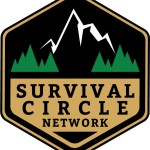Mental Health when SHTF.
Things are already pretty bad. Emotions are on edge with the economy and the uncertainty that we all go thru.
Now add in the shear terror of a real collapse. Yes I said TERROR. Ask your military friends who went to Bosnia.
Now add in the cessation of the normal delivery of mental health medication. What will this do for the millions in the country that suffer from mental health? This plus those that were on the edge, And I do not mean that in a derogatory manner. NAMI, the National Alliance on Mental Health has shown 1 of 5 Americans have some sort of mental health issues. What happens when the stability we enjoy in our country is gone?
Cat and I and hopefully a very special guest will talk about alternatives to the psychotropic drugs.
We do have some alternatives to the drugs, but most will be having experienced mental health workers to talk with people.
I also want to apologize for not have a news letter last week, not having the show last week and the lateness of this one. Some family health issues happened last week.
This week is something good that caused the lateness. I am now nationally certified to instruct and certify in Wilderness First Aid and CPR/AED. This is being added to our classes and new ones are in the mix. We also changed our big class. Battle Field Medic. It has always been well received . The overwheming change requested was to make it longer with shorter days. Orginally it was 2 days 20 hours. With all that we have added it is now 4 days and you come out with Wilderness first aid AND CPR/AED certifications.
Check out The Medic Shack home page for ALL the updates and to see the first item we have for sale in the The Medic Shack store.
Our tip of the week comes from Outside Magazine, The weather is warming and people are outside and getting injured.
Next to muscle strains and sprained ankles, minor wounds—cuts, blisters, scrapes, burns, and punctures—lead the list of injuries in the outdoors. They hurt and bleed. In the past, many first-aid courses would recommend cleaning the wound with any available water, like the soothing contents of a river, pond, or lake, but we now know that germs present even in clear water can cause serious infections. So using treated drinking water is always the best option.
Still, there are times when a dip in the river might be worthwhile. Here is the best method for cleaning a cut or other skin injury sustained in the wilderness:
- Manually remove dirt and debris.
- Assess whether the benefit of cleaning the wound with water is worth the risk of creating an infection if that water proves to be contaminated. Is there mud or debris still visible in the wound after manually cleaning it? If yes, the water looks clean, and you’re near someplace where you can thoroughly address the wound, it’s probably OK to flush it out in a stream. But if you’re in the wilderness for a week or more—enough time for an infection to take hold—wait until you can boil and cool water or otherwise disinfect it.
- Apply a thin layer of an antiseptic ointment, such as bacitracin, under the dressing.
Join us this week on The Medic Shack LIVE on the Survival Circle Radio Network. The Survival Circle 6pm PST 9pm EST

Click here for the Survival Circle
